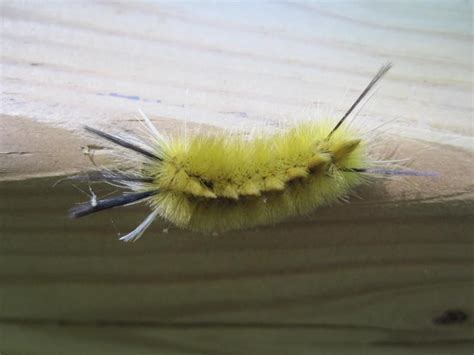Georgia, the heart of the southeastern United States, is home to various species of caterpillars that sting. Their venomous spines can cause intense pain and discomfort, making it crucial for hikers, campers, and outdoor enthusiasts to be aware of these insects. This article provides a comprehensive guide to caterpillars that sting in Georgia, covering their appearance, behavior, and potential health effects.

Types of Stinging Caterpillars in Georgia
There are several species of stinging caterpillars found in Georgia, each with unique characteristics:
-
Saddleback Caterpillar (Acharia stimulea): Brightly colored with prominent black, orange, and white markings. Its venomous spines are arranged in two large “saddles” on its back.
-
Spongy Moth Caterpillar (Lymantria dispar): Brown or gray with distinct tufts of hair. The spines on its body are shorter and менее заметны, but they can still cause severe irritation.
-
Puss Caterpillar (Megalopyge opercularis): Coppery brown with tufts of reddish-orange hair. The spines on its body are extremely venomous and can cause excruciating pain.
-
Buck Moth Caterpillar (Hemileuca maia): Green with yellow stripes and numerous poisonous spines. They are commonly found in hardwood forests.
Symptoms of a Caterpillar Sting
The symptoms of a stinging caterpillar sting can vary depending on the species, the number of spines that penetrate the skin, and the individual’s sensitivity:
- Intense pain: Sharp, burning pain that can last for hours or days.
- Swelling: Redness and swelling around the sting site.
- Itching: Severe itching that can be difficult to control.
- Nausea and vomiting: In severe cases, nausea and vomiting may occur.
- Anaphylaxis: In rare cases, a caterpillar sting can trigger a severe allergic reaction known as anaphylaxis, requiring immediate medical attention.
Treatment for Caterpillar Stings
If you are stung by a stinging caterpillar, it is essential to seek medical attention promptly. However, there are some immediate steps you can take before seeking professional help:
- Remove the spines: Carefully use tweezers or duct tape to remove any visible spines from the skin.
- Wash the area: Clean the sting site with soap and water.
- Apply ice: Place an ice pack or cold compress on the area to reduce pain and swelling.
- Take pain relievers: Over-the-counter pain relievers, such as ibuprofen or acetaminophen, can help alleviate discomfort.
- Monitor for signs of infection: Watch for signs of infection, such as increased pain, redness, or discharge from the sting site.
Prevention of Caterpillar Stings
To prevent caterpillar stings while enjoying the outdoors in Georgia, take the following precautions:
- Wear protective clothing: Wear long sleeves, pants, and gloves when hiking or camping in areas where stinging caterpillars are known to be present.
- Avoid touching caterpillars: Do not touch or handle caterpillars, regardless of their appearance.
- Be aware of your surroundings: Check for caterpillars on plants, leaves, and other surfaces before touching or sitting down.
- Stay on marked trails: Stick to designated trails to minimize exposure to stinging caterpillars.
Conclusion
Caterpillars that sting in Georgia can be a threat to outdoor enthusiasts, causing intense pain and discomfort. By familiarizing yourself with the different species, symptoms of a sting, and preventive measures, you can significantly reduce the risk of encountering and being harmed by these insects. If a sting occurs, seeking prompt medical attention and following the recommended treatment steps is crucial for optimal recovery. By increasing awareness and taking appropriate precautions, you can enjoy Georgia’s natural beauty without the worry of caterpillar stings.
